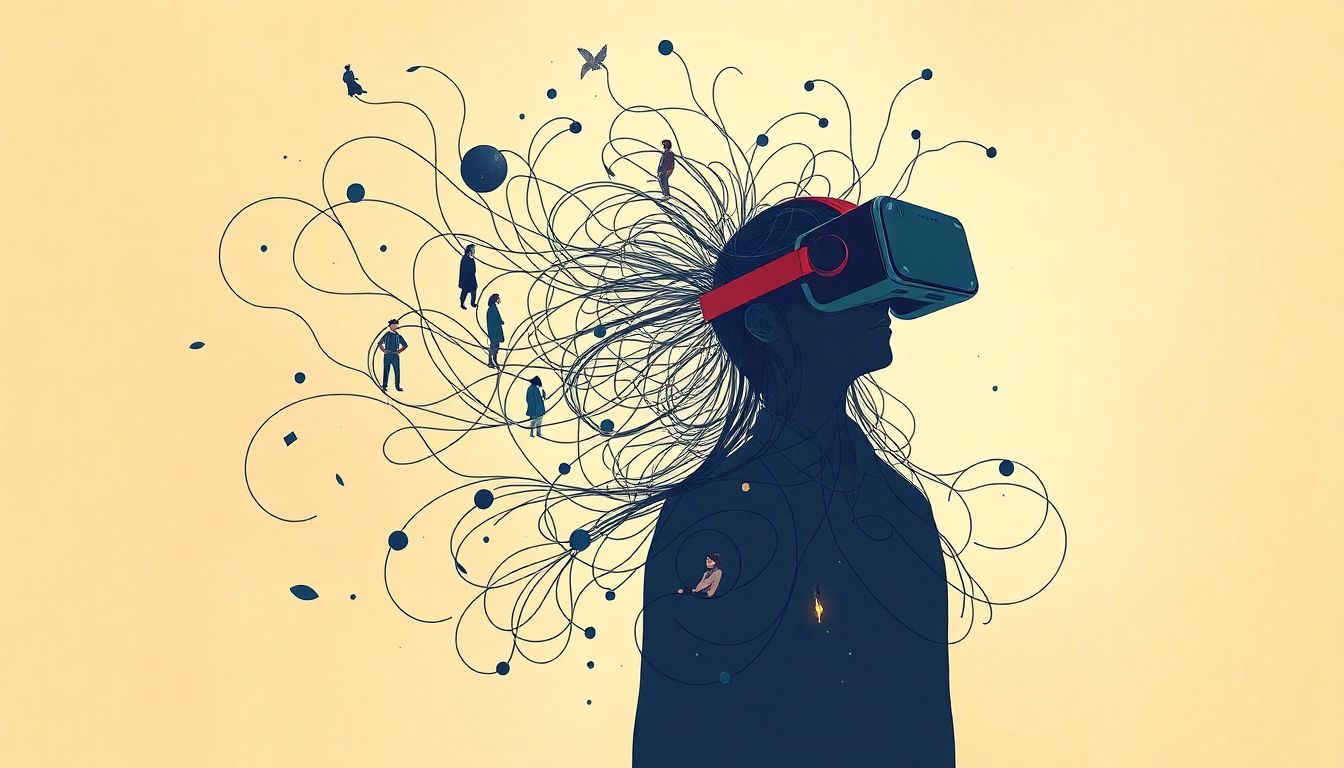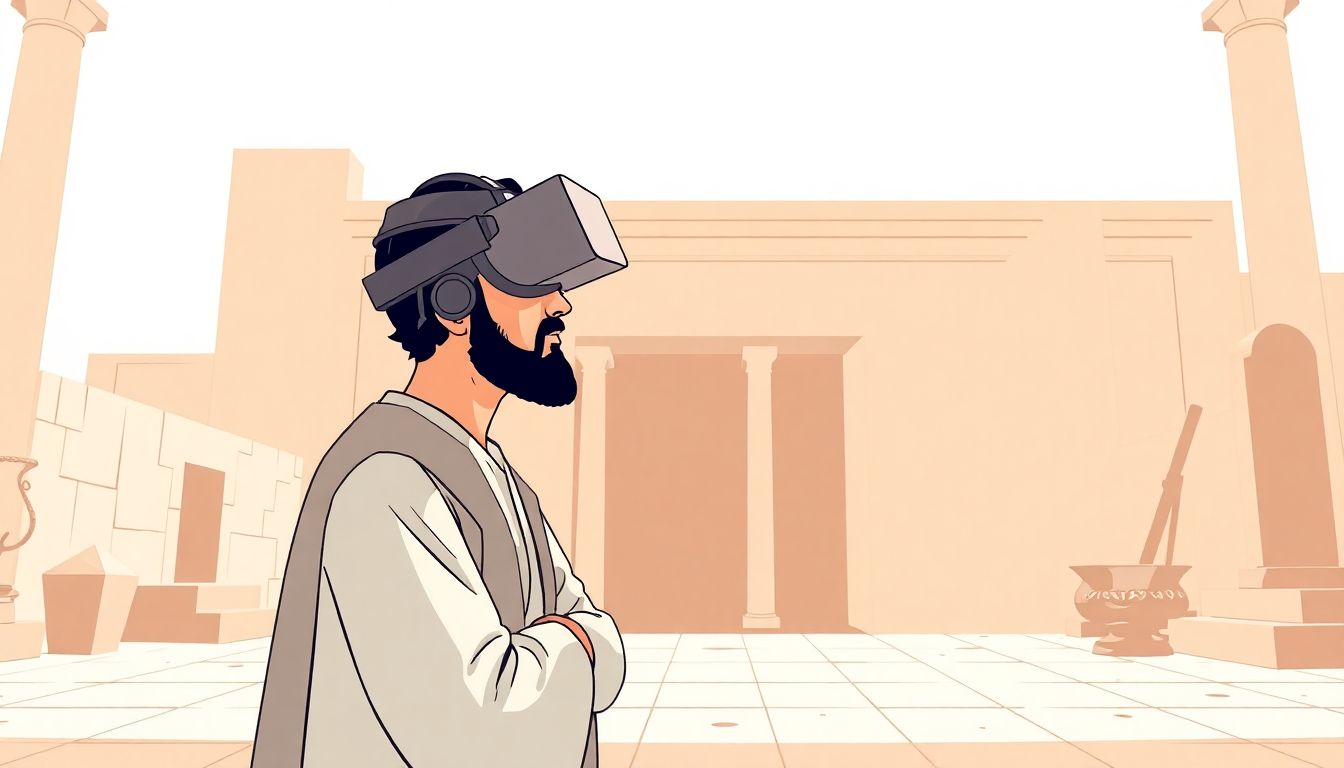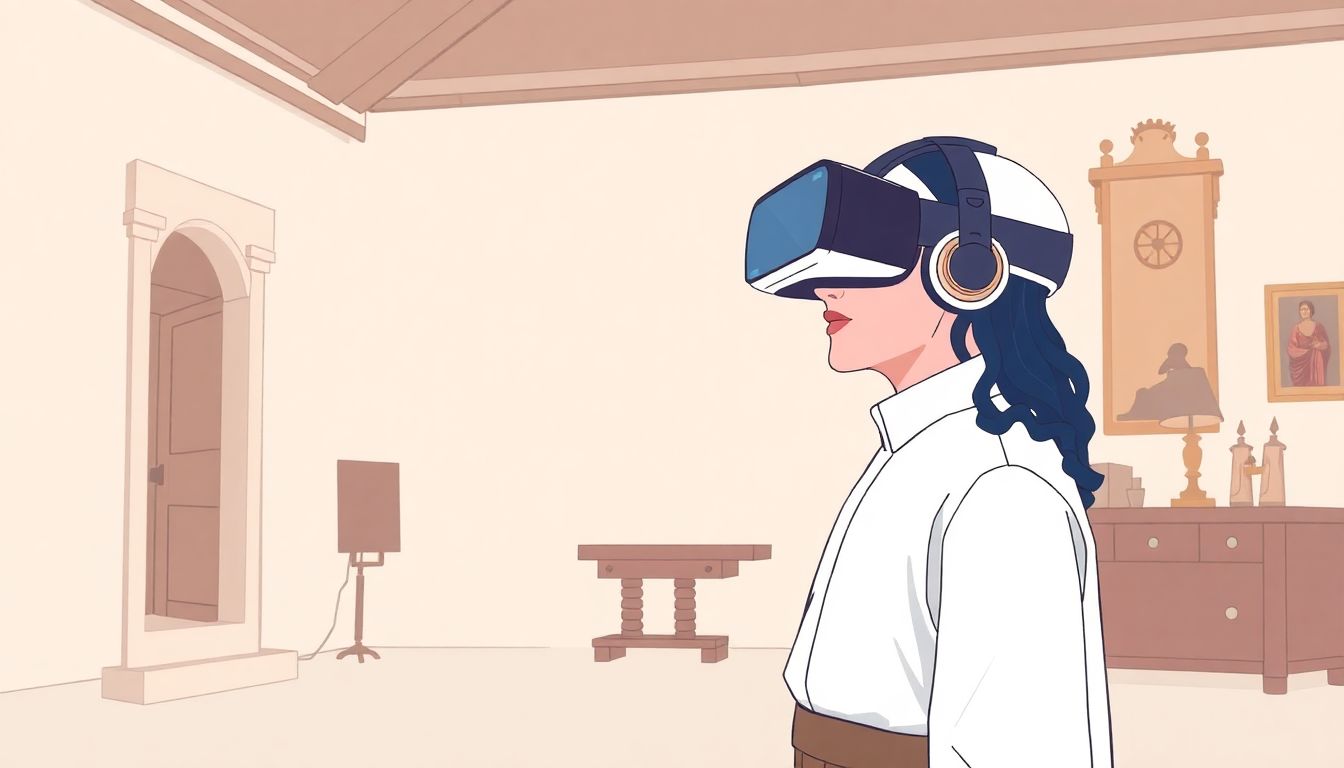If you’ve ever felt overwhelmed by the complexities of crafting a captivating story in virtual reality, you’re not alone. It can be a daunting task to weave together narrative threads, create relatable characters, and engage your audience in an immersive experience. Many writers struggle with these aspects and wonder how to elevate their storytelling to new heights in the VR space.
But here’s the good news: by using ChatGPT, you can transform your storytelling process. Stick around, and we’ll explore how this powerful AI can enhance character development, create interactive narratives, and even integrate with game engines to bring your virtual worlds to life.
Together, we’ll dive into practical examples and showcase the incredible benefits of incorporating ChatGPT into your VR projects. Plus, we’ll share some tips to help you make the most out of this exciting technology as you venture into your next creative endeavor.
Key Takeaways
- ChatGPT simplifies the storytelling process in virtual reality, helping creators craft dynamic narratives and relatable characters.
- It supports real-time dialogue and branching storylines, allowing user choices to influence the outcome better than traditional storytelling.
- The AI enhances character development, which leads to more engaging and emotionally resonant experiences for players.
- Integrating ChatGPT with game engines like Unity increases efficiency and effectiveness in developing immersive narratives.
- Using ChatGPT saves time, boosts creativity, and improves collaboration among writers and teams in VR projects.
- Future advancements in AI and VR may lead to more adaptable and responsive storytelling experiences.
- Writers should use clear prompts, iterate on ideas, and customize outputs to fit their unique styles when using ChatGPT.

The Importance of ChatGPT in Creating Virtual Reality Stories
ChatGPT plays a significant role in shaping how stories are crafted in virtual reality (VR).
It’s transforming the landscape of VR narratives by integrating AI to create richer, more immersive storytelling experiences.
This technology allows creators to enhance narratives with dynamic dialogue and complex plots that evolve in real time.
By incorporating ChatGPT, developers can engage users in ways that traditional storytelling cannot match, providing a customized experience that resonates with each participant.
For those looking to harness the capabilities of ChatGPT in VR, consider using prompts like:
- Create an engaging backstory for a VR character in a fantasy world.
- Generate dialogue between two characters in a VR scenario where they need to work together to solve a puzzle.
- Describe the emotional journey of a VR character as they face a major decision in their story.
By understanding the importance of ChatGPT, VR creators can leverage AI for narrative enhancement that leads to unforgettable storytelling experiences.
How ChatGPT Enhances Character Development in VR
ChatGPT enhances character development in VR by offering tools for creating complex characters with detailed backstories.
This AI-driven approach allows for dynamic character interactions that adapt based on user choices and actions.
Through real-time dialogue generation, ChatGPT improves emotional engagement by making characters relatable and approachable.
To help craft rich character arcs, try these prompts:
- Write a character profile for a VR hero, including their strengths, weaknesses, and motivations.
- Generate a dialogue exchange between a mentor and a trainee in a VR training scenario.
- Outline the evolution of a character’s emotions during a significant event in the plot.
These tools allow creators to explore character depth and foster an immersive experience for users, enhancing their emotional investment in the story.
Using ChatGPT for Interactive Narratives in Virtual Reality
Using ChatGPT for interactive narratives elevates storytelling by allowing for user-driven plots that engage participants at every turn.
This system supports branching narratives, enabling creators to develop multiple story paths tailored to user input and decisions.
By integrating real-time dialogue generation, ChatGPT creates immersive user experiences that feel responsive and alive.
Here are some prompts to create interactive narratives:
- Design a branching storyline where a user’s choice leads to one of three different outcomes.
- Craft a dialogue scene that allows users to select character responses for an interactive encounter.
- Develop a scenario where players must solve a mystery, with clues generated based on their previous choices.
These techniques empower writers to build compelling, engaging adventures that players will want to explore repeatedly, each time discovering something new.
Combining ChatGPT with Game Engines for VR Storytelling
Combining ChatGPT with game engines like Unity and Unreal enhances the capabilities of VR storytelling tremendously.
This synergy allows developers to optimize story creation within frameworks familiar to them, making it easier to integrate AI-driven narratives.
For those looking to maximize their storytelling potential, consider how to integrate ChatGPT into your workflows by using prompts like:
- Explain how to implement ChatGPT responses in a Unity game project.
- Describe the process of creating a character dialogue system using Unreal Engine and ChatGPT.
- Generate a list of narrative elements that can be combined with game mechanics for an immersive VR experience.
Leveraging these tools not only enhances gameplay narratives but also streamlines the VR development process, making story integration smoother than ever.

Practical Examples of ChatGPT in Virtual Reality Projects
There are a multitude of ways ChatGPT has been applied in real-world virtual reality projects, showcasing its versatility and effectiveness.
Take, for instance, a VR gaming project where ChatGPT was used to create unique quests based on player decisions.
In one game, players could choose to either ally with a faction or betray them, with ChatGPT generating dialogue and mission objectives that aligned with those choices.
This results in a gameplay experience where no two sessions are alike, providing high replay value.
Another exciting example comes from VR experiences in education.
A company developed a VR history simulation where students could interact with historical figures, with the dialogues generated in real-time by ChatGPT.
This allowed students to ask questions and engage in discussions, enhancing their understanding of historical events in a fun, immersive environment.
For those looking to implement similar techniques, consider these prompts:
- Generate a quest line for a fantasy VR game where players’ choices influence the outcomes.
- Create a dialogue tree for a historical figure in a VR educational experience.
- Outline a mission in a sci-fi universe that changes based on user interactions.
These practical examples highlight the creativity and engagement that ChatGPT can bring to virtual reality storytelling.
Benefits of Using ChatGPT for VR Story Creators
Using ChatGPT offers numerous advantages for VR story creators, enhancing both the creative process and the final product.
One significant benefit is the time efficiency that comes with AI-generated content; this allows writers to focus on overarching narratives while ChatGPT handles the more granular elements.
Additionally, it helps enhance creativity, acting as a brainstorming partner that can generate new ideas and perspectives that a single creator may overlook.
Scalability is another key advantage.
With the ability to generate vast amounts of content, creators can develop intricate storylines with multiple branches without the overwhelm of manual writing.
For collaboration, integrating ChatGPT allows teams to work together more effectively, as everyone can contribute ideas to the AI, which can filter and refine them.
As you start to incorporate ChatGPT, keep these prompts in mind:
- List potential plot twists for a VR story set in a dystopian world.
- Generate character backstories for a group of protagonists in a fantasy VR game.
- Create dialogue options for a branching narrative where users can influence the ending.
In summary, ChatGPT empowers VR creators by enhancing creativity, increasing efficiency, and enabling collaborative storytelling.
Future Possibilities for ChatGPT in Virtual Reality Storytelling
The future of ChatGPT in virtual reality storytelling holds exciting prospects as technology continues to evolve.
With advancements in AI, we can expect more sophisticated and predictive narrative techniques, allowing for truly adaptive storytelling experiences.
This means stories can respond in real-time to player emotions, decisions, and interactions, creating a deeply personal journey.
There’s also potential for the integration of voice recognition, which would allow players to communicate with AI characters seamlessly.
Imagine walking into a VR world and speaking to a character who not only understands you but adjusts the plot based on your input.
As for the user-generated content sector, creators may soon be able to craft their own stories using ChatGPT as a storyteller on demand.
To spark your imagination about these possibilities, here are some prompts you can use:
- Explore how advancements in VR technology can impact user narratives with ChatGPT.
- Predict the future of character interactions in VR environments using AI.
- Imagine a new VR game concept that utilizes ChatGPT to adapt its story based on real-time player emotions.
Ultimately, as technology advances, the relationship between ChatGPT and VR storytelling will likely lead to groundbreaking experiences.
Tips for Writers Using ChatGPT for VR Experiences
Writers looking to incorporate ChatGPT into their VR projects can benefit from practical tips that enhance the creative process.
First, always start with clear and concise prompts—this helps the AI generate better-focused content.
Don’t hesitate to iterate on your prompts; refining them based on previous results can lead to richer outputs.
Also, use ChatGPT for brainstorming ideas; it can provide inspiration when you’re facing a creative block.
When developing characters, ask ChatGPT to detail their relationships with others or their story arcs to add depth.
Using the AI to create dialogue can be effective; consider specifying tone or character personality to tailor the output.
Even after generating content, review and modify the text to ensure it fits your unique voice and style.
Try these practical prompts to make the most out of your ChatGPT interactions:
- Create a list of character interactions that could occur during a pivotal moment in a VR story.
- Generate a comprehensive story outline that includes major plot points for a VR game.
- Draft dialogue for a tense confrontational scene between characters with opposing goals.
By following these tips, writers can effectively leverage ChatGPT to enhance their VR storytelling endeavors.

Practical Examples of ChatGPT in Virtual Reality Projects
ChatGPT has already made waves in numerous real-world virtual reality projects, showcasing its adaptability and innovation.
One notable example is a VR game that uses ChatGPT to create customized story arcs based on player decisions.
Players in this game can make choices that change dialogues and quests, leading to unique gameplay experiences with each session.
In the field of education, some teams have developed VR simulations allowing students to interact with historical figures.
In these experiences, ChatGPT generates contextually relevant dialogues in real-time, enabling students to ask questions and engage meaningfully.
This interactive element enhances learning by immersing students in historical contexts they can explore firsthand.
When thinking about implementing ChatGPT in your own VR projects, consider these practical prompts:
- Design an interactive quest for a role-playing game where ChatGPT tailors the mission based on player choices.
- Create a dialogue script between two historical figures during a significant event, adaptable to player inquiries.
- Outline how user actions could lead to multiple endings in a VR storytelling game built around suspense.
Benefits of Using ChatGPT for VR Story Creators
The advantages of incorporating ChatGPT into VR storytelling projects are substantial and transformative.
One significant benefit is the time and effort saved, allowing writers to focus on broad narratives while ChatGPT generates detailed elements.
This enhances creativity by acting as a brainstorming partner that provides new ideas and perspectives you might not have considered.
Scalability is another compelling reason; ChatGPT can help generate vast amounts of content efficiently, enabling complex narratives without overwhelming the creator.
Collaboration becomes seamless when different team members can contribute ideas to the AI for refinement and adaptation.
To explore these benefits further with ChatGPT, try out these prompts:
- List creative twists for a VR adventure story centered around time travel.
- Create detailed character bios for the cast in a horror-themed VR experience.
- Generate multiple conversation branches that affect the direction of the plot in a mystery game.
Future Possibilities for ChatGPT in Virtual Reality Storytelling
Looking ahead, the potential for ChatGPT in VR storytelling promises even more exciting possibilities as technology continues to evolve.
Advanced AI capabilities might allow for stories that dynamically adapt to player decisions and emotional reactions in real-time.
Imagine a scenario where players verbally interact with AI characters, thus affecting plot direction and character responses instantaneously.
This vision could become a reality as voice recognition technology becomes more sophisticated and integrated into VR platforms.
Additionally, user-generated content may rise, enabling individuals to craft their narratives while leveraging ChatGPT as their storytelling guide.
To spark your imagination regarding future advancements with ChatGPT in VR, you might consider these prompts:
- Assess how the future of AI technology could revolutionize interactive storytelling in VR.
- Predict the evolution of character relationships and interactions within VR environments using AI.
- Envision a fresh concept for a VR game that evolves in real-time based on user emotions and feedback.
Tips for Writers Using ChatGPT for VR Experiences
Writers eager to integrate ChatGPT into their virtual reality storytelling can follow these practical tips.
Start with well-structured and precise prompts; clarity will significantly improve the output you receive.
Feel free to refine your prompts iteratively; this adjustment can lead to richer, more focused responses from ChatGPT.
Utilize the AI for brainstorming scenarios, especially when you hit a creative block, as it can offer fresh perspectives.
As you develop your characters, ask for detailed relationships and emotional arcs, helping to deepen their connection to the audience.
For dialogue, be specific about tone and style to ensure the generated conversations fit seamlessly with your characters.
Finally, always review and adjust the AI-generated content to align it with your personal voice and objectives.
To enhance your experience with ChatGPT, consider these effective prompts:
- Create a list of critical character interactions that could unfold during a pivotal scene in your VR narrative.
- Draft a full story outline for your VR game, summarizing key plot points and character arcs.
- Write engaging dialogue for a confrontation between two opposing characters, emphasizing their differing motivations.
FAQs
ChatGPT analyzes personality traits and emotions, helping creators craft deeper, more relatable characters. It assists in dialogue generation, enhancing interactions that feel authentic and immersive, essential for engaging VR storytelling.
Yes, ChatGPT can generate branching storylines based on user interactions. It tailors responses to player choices, creating a dynamic and personalized narrative experience that can evolve seamlessly within the VR environment.
ChatGPT speeds up the creative process, provides fresh ideas, enhances narrative depth, and supports interactive elements. This empowers creators to focus on design and technical aspects while enjoying richer storytelling opportunities.
The future holds potential for more advanced AI-driven narratives, personalized experiences, and adaptive storytelling. As AI evolves, ChatGPT could enable fully immersive environments where stories adapt based on user behavior and preferences.
